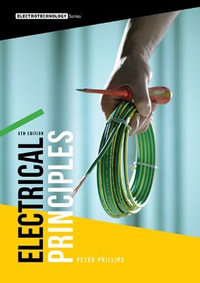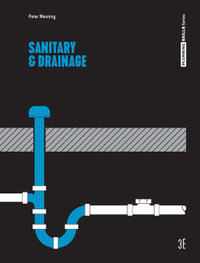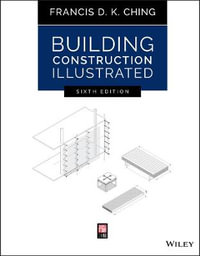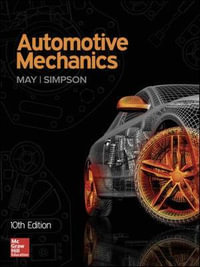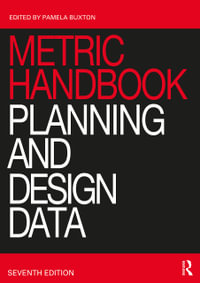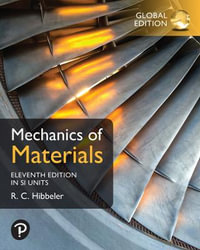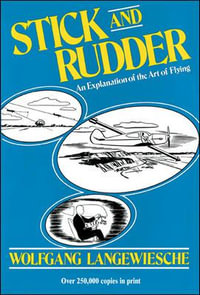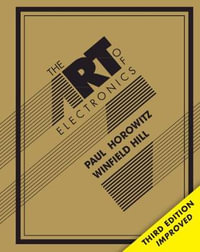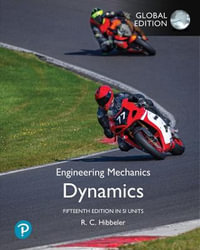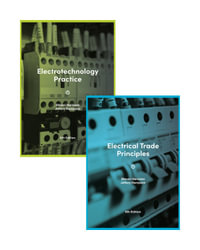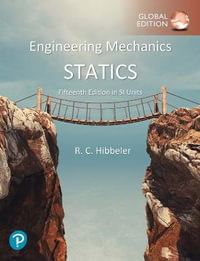
Fundamentals of Geotechnical Engineering
5th Edition
By: Braja M. Das, Nagaratnam Sivakugan
Hardcover | 1 January 2016 | Edition Number 5
At a Glance
800 Pages
Revised
23.5 x 19 x 3.5
Hardcover
RRP $242.95
$127.95
47%OFF
or 4 interest-free payments of $31.99 with
orThe text offers a concise blend of critical information from Braja Das' leading Fundamentals of Geotechnical Engineering and Principles of Foundation Engineering. This valuable, cohesive book focuses on the fundamental concepts of both soil mechanics and foundation engineering without the distraction of excessive details or cumbersome alternatives. A wealth of worked-out examples and useful supporting figures help your students master key concepts and gain essential problem-solving skills.
Prestigious authors Das and Sivakugan carefully balance today's most current research with practical field applications in a proven approach that has made Das' books undisputed leaders in the field. A wealth of accompanying resources, including MindTap®, help reinforce the geotechnical engineering skills your students need.
New to this Edition
- NEW CHAPTER HIGHLIGHTS LOAD RESISTANCE FACTOR DESIGN (LRFD). This all-new chapter (Ch. 20) highlights a new design concept that is becoming increasingly popular in geotechnical applications.
- 40 NEW FIELD APPLICATION PHOTOGRAPHS FURTHER CLARIFY CONCEPTS. Additional photographs provide a clearer understanding of the big picture. These new photos added to the book's abundance of illustrations help students understand the material. Most of the photographs are taken from construction sites to provide a clear perspective of real-world challenges.
- NEW CRITICAL THINKING PROBLEMS APPEAR IN EACH CHAPTER. These problems challenge students to think outside the box and develop creative, workable solutions.
- NEW COVERAGE HIGHLIGHTS IMPORTANT SKILLS FOR GEOTECHNICAL ENGINEERS. Chapter 4 discusses critical visual identification of soils. Chapter 9 includes a new section on the effects of the initial excess pore water pressures on time-rate consolidation settlement. The average degree of consolidation and corresponding time factor values are given for several initial pore pressure distributions. A new section on construction time correction of consolidation settlement has also been added.
- BOOK FOCUSES ON CRITICAL CHALLENGES FOR NEW GEOTECHNICAL ENGINEERS. Chapter 10 discusses the selection of the right strength parameters in a project. Chapter 12 includes a new section on field instrumentation, prompted by the increasing use of instrumentation in geotechnical projects.
- COVERAGE EMPHASIZES NEW KEY TOPICS. Chapter 15 now analyzes cantilever sheet pile walls and anchored sheet pile walls. Chapter 16 discusses bearing capacity of a strip foundation subjected to eccentric and inclined loading in greater detail. Chapter 17 describes a new settlement prediction method for granular soils, proposed by Berardi and Lancellotta, with examples to illustrate its application. The chapter now discusses a simple method to account for the additional settlement of foundations, induced by the water table rise in granular soil.
Braja M. Das
Dr. Braja Das is Dean Emeritus of the College of Engineering and Computer Science at California State University, Sacramento. He received his M.S. in Civil Engineering from the University of Iowa and his Ph.D. in Geotechnical Engineering from the University of Wisconsin. He is the author of a number of geotechnical engineering texts and reference books and more than 250 technical papers in the area of geotechnical engineering. His primary areas of research include shallow foundations, earth anchors, and geosynthetics. Dr. Das is a Fellow and Life Member of the American Society of Civil Engineers, Life Member of the American Society for Engineering Education, and an Emeritus Member of the Chemical and Mechanical Stabilization Committee of the Transportation Research Board of the National Research Council (Washington D.C.). He has received numerous awards for teaching excellence, including the AMOCO Foundation Award, the AT&T Award for Teaching Excellence from the American Society for Engineering Education, the Ralph Teetor Award from the Society of Automotive Engineers, and the Distinguished Achievement Award for Teaching Excellence from the University of Texas at El Paso.
Nagaratnam Sivakugan
Dr. Sivakugan received his Bachelor’s degree in Civil Engineering from University of Peradeniya, Sri Lanka, with First Class Honors. He earned his MSCE and Ph.D. from Purdue University, West Lafayette, U.S.A. Dr. Sivakugan’s writings include six books, 120 refereed international journal papers, 80 refereed international conference papers, and more than 100 consulting reports. As a registered professional engineer of Queensland and a chartered professional engineer, Dr. Sivakugan does substantial consulting work for the geotechnical and mining industry in Australia and overseas, including the World Bank. He is a Fellow of the American Society of Civil Engineers and Engineers Australia. He has supervised 13 Ph.D. students to completion at James Cook University, Queensland, Australia, where he was the Head of Civil Engineering from 2003 to 2014.
Industry Reviews
"The presentation is quite good. Looking at other textbooks on the same topic I find that this book reads very well. Maybe too well, many students read ahead of the lecture and they like the style and the clarification of concepts. The examples in the book are solved in a detailed, step-by-step and logical manner. It reads very well and presents topics in a clear manner supported by quality diagrams."
"The topics covered are complete. I like the additional resource materials for students and instructors. The example problems are good. ? The textbook is well organized and complete. It is comprehensive, it includes new information."
1. GEOTECHNICAL ENGINEERING – FROM THE BEGINNING.
Geotechnical Engineering Prior to the 18th Century. Pre-classical Period of Soil Mechanics (1700–1776). Classical Soil Mechanics – Phase I (1776–1856). Classical Soil Mechanics – Phase II (1856–1910). Modern Soil Mechanics (1910–1927). Geotechnical Engineering after 1927. End of an Era.
2. SOIL DEPOSITS – ORIGIN, GRAIN-SIZE, AND SHAPE.
Rock Cycle and the Origin of Soil. Soil Deposits--General. Residual Soil. Gravity Transported Soil. Alluvial Deposits. Lacustrine Deposits. Glacial Deposits. Aeolian Soil Deposits. Organic Soil. Soil–Grain Size. Clay Minerals. Specific Gravity (Gs). Mechanical Analysis of Soil. Sieve Analysis. Hydrometer Analysis. Effective Size, Uniformity Coefficient, and Coefficient of Gradation. Grain Shape.
3. WEIGHT-VOLUME RELATIONSHIPS AND PLASTICITY.
Weight–Volume Relationships. Relationships among Unit Weight, Void Ratio, Moisture Content, and Specific Gravity. Relationships among Unit Weight, Porosity, and Moisture Content. Various Unit Weight Relationships. Relative Density. Consistency of Soil. Activity. Liquidity Index. Plasticity Chart.
4. SOIL CLASSIFICATION.
AASHTO Soil Classification System. Unified Classification System (USCS), Visual Identification of Soils.
5. SOIL COMPACTION.
Compaction – General Principles. Standard Proctor Test. Factors Affecting Compaction. Modified Proctor Test. Empirical Relationships. Field Compaction. Specifications for Field Compaction. Determination of Field Unit Weight after Compaction. Effect of Compaction on Cohesive Soil Properties. Other Ground Improvement Methods.
6. HYDRAULIC CONDUCTIVITY.
Bernoulli''s Equation. Darcy''s Law. Hydraulic Conductivity. Laboratory Determination of Hydraulic Conductivity. Empirical Relations for Hydraulic Conductivity. Equivalent Hydraulic Conductivity in Stratified Soil. Permeability Test in the Field by Pumping from Wells.
7. SEEPAGE.
Laplace''s Equation of Continuity. Flow Nets. Seepage Calculation from a Flow Net. Flow Nets in Anisotropic Soil.
8. STRESSES IN A SOIL MASS.
EFFECTIVE STRESS CONCEPT.
Stresses in Saturated Soil without Seepage. Stresses in Saturated Soil with Seepage. Seepage Force. Heaving in Soil Due to Flow around Sheet Piles.
VERTICAL STRESS INCREASE DUE TO VARIOUS TYPES OF LOADING.
Stress Caused by a Point Load. Vertical Stress Caused by a Line Load. Vertical Stress Below a Uniformly Loaded Circular Area. Vertical Stress Caused by a Rectangularly Loaded Area.
9. CONSOLIDATION.
Fundamentals of Consolidation. One-Dimensional Laboratory Consolidation Test. Void Ratio–Pressure Plots. Normally Consolidated and Overconsolidated Clays. Effect of Disturbance on Void Ratio–Pressure Relationship. Calculation of Settlement from One-Dimensional Primary Consolidation. Compression Index (Cc) and Swell Index (Cs). Settlement from Secondary Consolidation. Time Rate of Consolidation. Coefficient of Consolidation. Calculation of Primary Consolidation Settlement under a Foundation. Skempton–Bjerrum Modification for Consolidation Settlement. Effects of Initial Excess Pore Pressure Distribution of U-Tv Relationship. Construction Time Correction of Consolidation Settlement.
10. SHEAR STRENGTH OF SOIL.
Mohr–Coulomb Failure Criteria. Inclination of the Plane of Failure Caused by Shear.
LABORATORY DETERMINATION OF SHEAR STRENGTH PARAMETERS.
Direct Shear Test. Triaxial Shear Test. Consolidated–Drained Test. Consolidated–Undrained Test. Unconsolidated–Undrained Test. Unconfined Compression Test on Saturated Clay. Selection of Shear Strength Parameters. Sensitivity and Thixotropy of Clay. Anisotropy in Undrained Shear Strength.
11. GROUND IMPROVEMENT.
CHEMICAL STABILIZATION.
Lime Stabilization. Cement Stabilization. Fly–Ash Stabilization.
MECHANICAL STABILIZATION.
Vibroflotation. Dynamic Compaction. Blasting. Precompression. Sand Drains.
12. SUBSURFACE EXPLORATION.
Subsurface Exploration Program. Exploratory Borings in the Field. Procedures for Sampling Soil. Split–Spoon Sa
ISBN: 9781305635180
ISBN-10: 1305635183
Series: Mindtap Course List
Published: 1st January 2016
Format: Hardcover
Language: English
Number of Pages: 800
Audience: College, Tertiary and University
Publisher: CL Engineering
Country of Publication: US
Edition Number: 5
Edition Type: Revised
Dimensions (cm): 23.5 x 19 x 3.5
Weight (kg): 1.4
Shipping
| Standard Shipping | Express Shipping | |
|---|---|---|
| Metro postcodes: | $9.99 | $14.95 |
| Regional postcodes: | $9.99 | $14.95 |
| Rural postcodes: | $9.99 | $14.95 |
How to return your order
At Booktopia, we offer hassle-free returns in accordance with our returns policy. If you wish to return an item, please get in touch with Booktopia Customer Care.
Additional postage charges may be applicable.
Defective items
If there is a problem with any of the items received for your order then the Booktopia Customer Care team is ready to assist you.
For more info please visit our Help Centre.
You Can Find This Book In
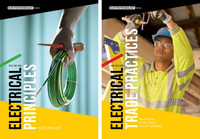
Electrical Principles (5th Edition) + Electrical Trade Practices Student Book (3rd Edition) - Value Pack
Multi-Copy Pack
RRP $219.95
$173.75
OFF
